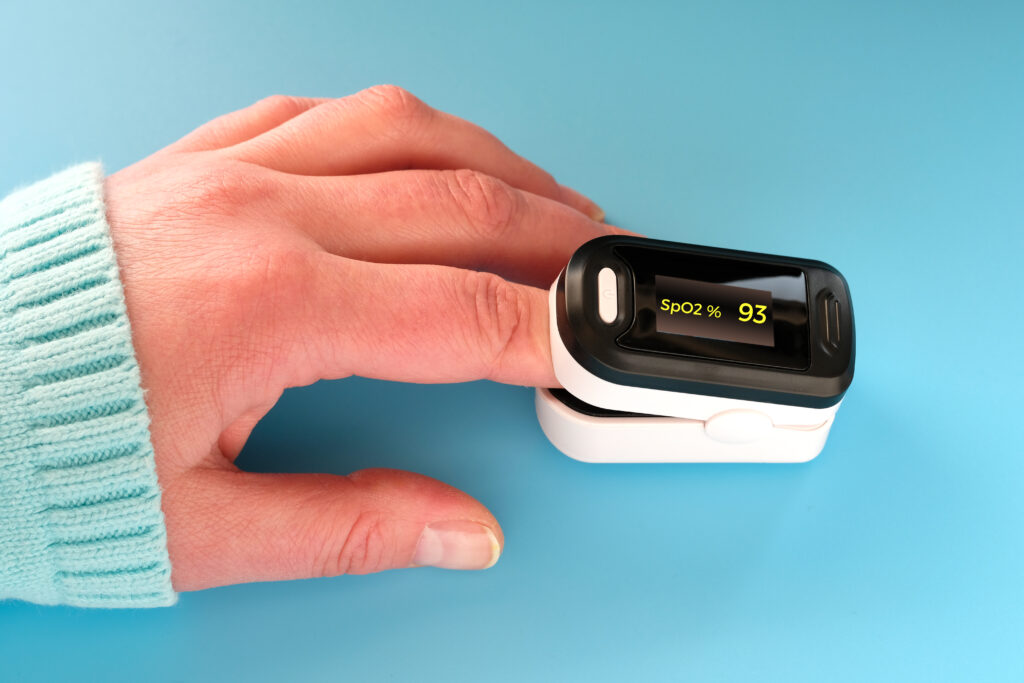
What is Pulse Oximetry?
Pulse oximeter measures the oxygen levels in your blood. It is used to monitor individuals with medical conditions that can affect blood oxygen levels such as chronic obstructive pulmonary disease (COPD), asthma, pneumonia, lung cancer, anaemia, heart attack or heart failure, congenital heart defects etc.
Do You Need a Pulse Oximeter At Home?
The debate is ongoing among medical professionals on whether you should have one at home.
The benefit is clear for patients (not hospitalised) who have COVID-19 symptoms such as cough, fever, and shortness of breath to check their blood oxygen level. But for people who are young and healthy with no COVID-19 symptoms, owning one Pulse Oximeter at home may not be necessary.
What Do You Need to Know About Pulse Oximeter?
- While pulse oximeters used at home can detect low blood oxygen (hypoxia) associated with acute COVID-19, not all changes in pulse oximetry are related to COVID-19. Changes might be related to a non-COVID pulmonary problem such as asthma or unrelated pneumonia.
- Shortness of breath and low oxygen levels are just two possible symptoms of COVID-19. It is important to know other possible COVID-19 symptoms such as cough, fever, chills, repeated shaking with chills, muscle pain, headache, sore throat, and loss of taste or smell. These can appear between 2 to 14 days after exposure to the virus.
- Know your baseline level and look out for changes in reading. If there is a drop, seek a doctor’s advice on what’s causing those changes.
- Depending on the model of the oximeter, the level of oxygen saturation between 95% and 97% is considered normal. Low blood oxygen (hypoxia) can be defined as a measured oxygen saturation below 94% in the absence of chronic lung disease. Anything below that would be a reason to call a doctor, and anything under 90% would be a reason to go to the emergency room.
- If you have an existing medical condition that may affect blood oxygen levels, seek a doctor’s advice before purchasing. Examples of such conditions are chronic obstructive pulmonary disease, asthma, pneumonia, lung cancer, anaemia, heart failure, congenital heart defects etc.
Patients with chronic lung disease often have a degree of hypoxia, in which case target saturation rates generally fall between 88% and 92%.
How Does Pulse Oximetry Work?
During a pulse oximetry reading, a small clamp-like device is placed on a finger. Small beams of light pass through the blood in the finger, measuring the amount of oxygen. It does this by measuring changes of light absorption in oxygenated or deoxygenated blood, thus your oxygen saturation.
Low blood oxygen (hypoxia) can be defined as a measured oxygen saturation below 94% in the absence of chronic lung disease.
Home pulse oximeters have long been used, usually for monitoring chronic lung disease and heart failure.
What Can Affect Accuracy?
Falsely low readings may occur if:
- Peripheries are cold
- Poor perfusion due to conditions such as hypotension or cardiac failure
- People who have tattoos on the measured finger, nail polish, or false nails
- Measuring while lying horizontally
- In patients with anaemia, sickle cell disease, and other haemoglobinopathies
If you have further inquiries about pulse oximetry, you may consult our pharmacist at any CARiNG Pharmacy stores or message us on our Facebook page.
Pulse oximeters are available at CARiNG Pharmacy.
Tags
Latest Health Info
Brave the Cold: Winter Travel Needs
Winter travel has its kind of magic — snow-covered landscapes, cozy lodges, hot drinks, and festive markets. But traveling in ...
Beat the Heat When Travelling
Whether you’re on a scenic beach vacation or exploring a busy city, hot weather can quickly wear you out and ...
Got Pins & Needles? Learning about Diabetic Neuropathy
Diabetic neuropathy is a common yet serious complication of diabetes, estimated to affect up to 50% of people with the ...




